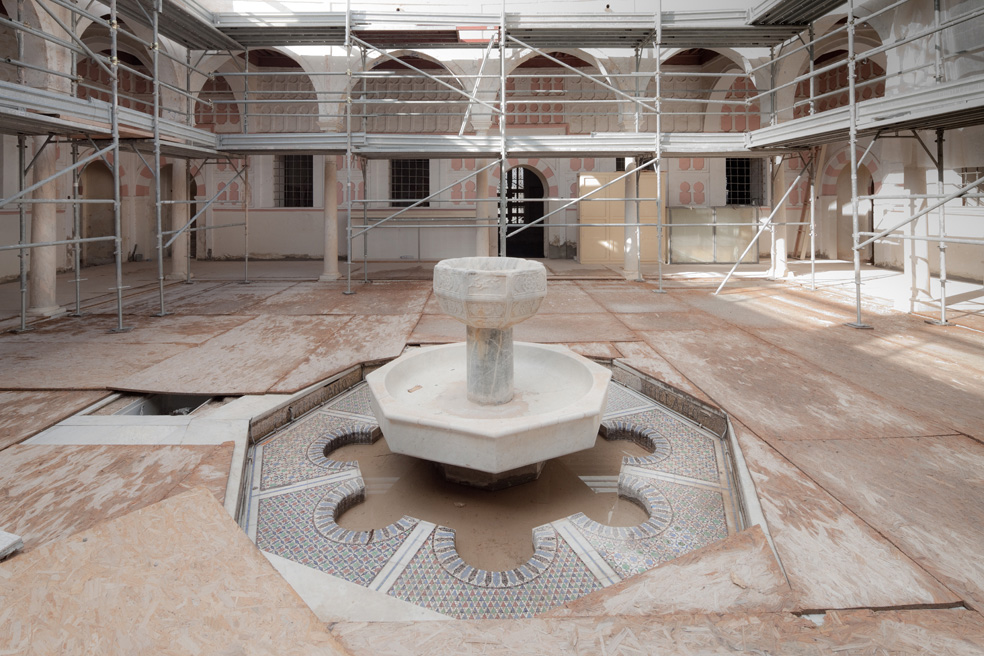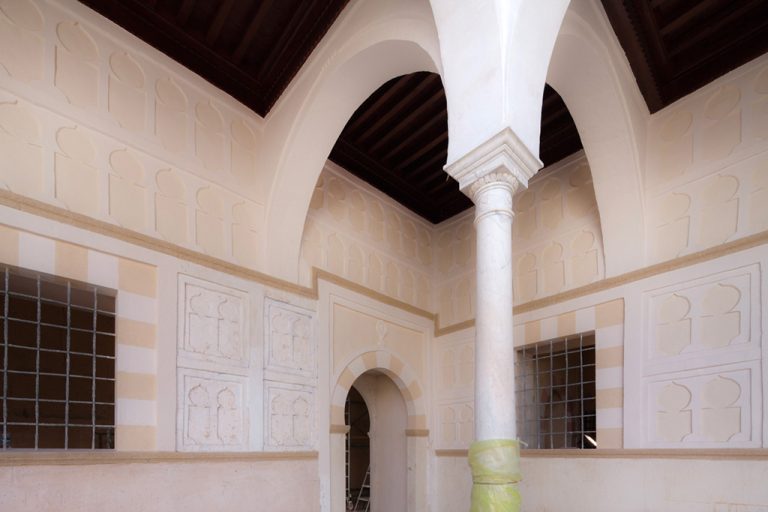When Count Volpi died, his daughter Anna Maria Cicogna Mozzoni Volpi, while partially respecting the original architectural style of the ex-Garamalli villa, expanded the building with the construction of the reception hall , an ex novo wing reserved for servants and two first floor apartments.
The oriental-style furnishings of the rooms and the new composition of the large garden surrounding the villa are also attributed to her.
Until the end of the 1960s, the villa was inhabited by Countess Volpi.
After the Revolution of October 28, 1969, the building was entrusted to the Department of Antiquities; in respect of the pre-existing structure, some changes were made to the internal environments to assign it to the first Islamic Museum of Libya, with the inauguration taking place at the end of the works in 1973.















